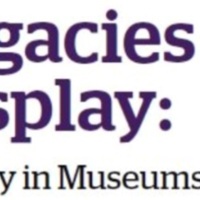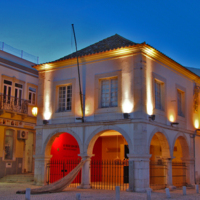
National Museum Afroperuano
The National Museum Afroperuano (or National Museum of Afro-Peruvian History) opened in 2009. Housed in the 'House of Thirteen Coins', in Lima, the museum is dedicated to acquiring, preserving and interpreting objects relating to African history in Peru.
The exhibitions begin by examining the arrival of Africans in Peru, via the Portuguese slave trade. The interpretation explores the process of enslavement and transportation alongside the nature of plantation work and the treatment of the enslaved by the Portuguese. A range of artefacts, artist representations and artefacts visually present these issues to visitors.
The exhibition examines the abolition of slavery in 1856 following the rise of Simon Bolivar and the independence of Peru. Objects and photographs then depict the influences of African culture in different aspects of Peruvian life, including music, dress, art and food.

Mercado de Escravos
The Mercado de Escravos (or Slave Market Museum) is situated in the center of Lagos on the site of a fifteenth-century slave market, believed to have been the first in Europe. The museum building itself was built in the seventeenth century on the remains of the market, first as the Royal Overseer's Office, and then as the Customs House from 1755. The museum seeks to highlight the history of Portuguese involvement in the enslavement of African people.
The opening displays in the museum provide the visitor with detail about the process of enslaved Africans being transported from Africa to Portugal, and how they were then integrated into Portuguese society. There is also a panel which provides information linking this to the slave trade in Brazil, which was then a Portuguese colony.
On the second floor of the museum, there are further displays about the slave trade. The collections include books, artefacts, archival material and pieces of art (both contemporary and historic). There are tablets available so that visitors can view more of the museum's collections that are not out on display.
The Slave Market also provides visitors with information about archaeological excavations on the medieval rubbish tip of Lagos, which have led to the discovery of skeletons thought to belong to enslaved Africans.